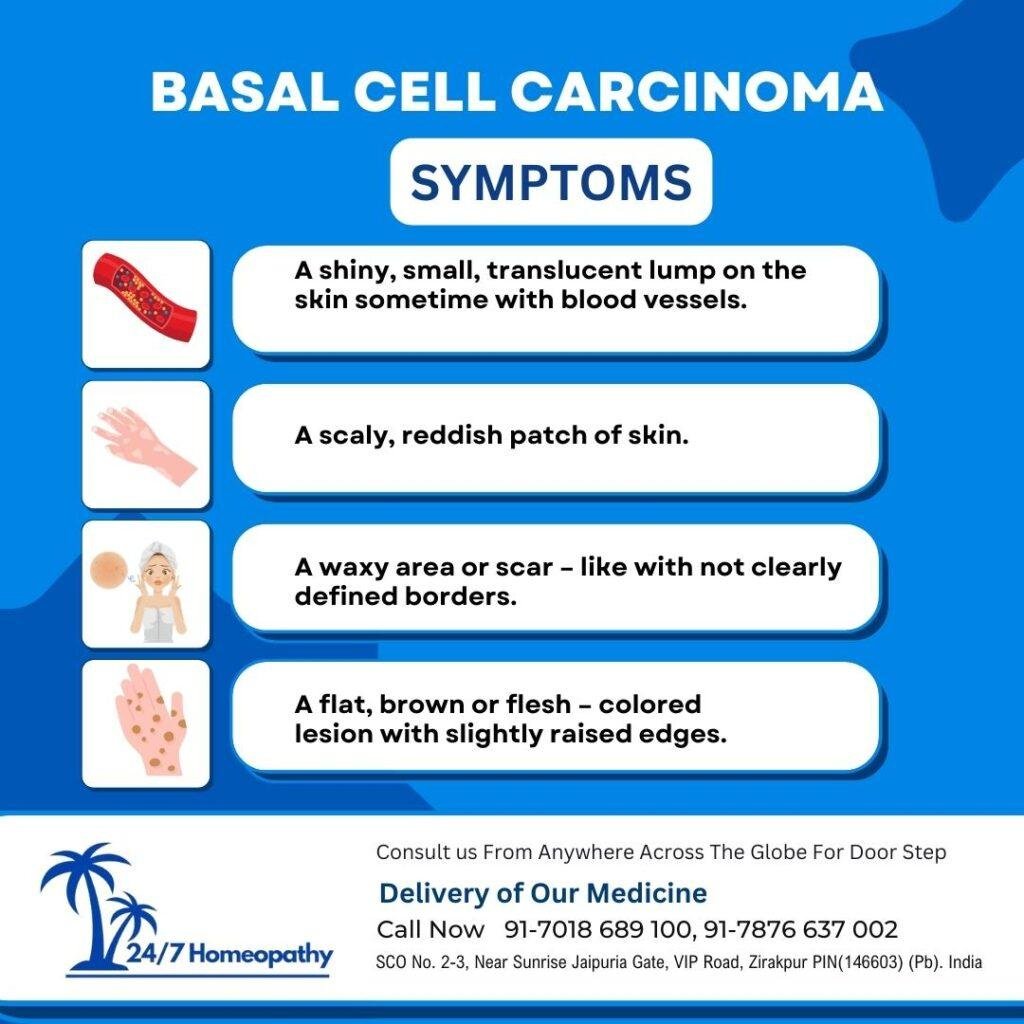BASAL CELL CARCINOMA
Basal cell carcinoma is a type of skin cancer that affects the basal cells. Basal cells produce new skin cells and are responsible for growth and repair of skin. When basal cells become damaged by prolonged exposure to the sun’s UV rays, they can mutate and grow uncontrollably forming a cancerous tumor.
It is commonly found on areas of skin that have been exposed to sun such as face, neck and arms.
It grows slowly and rarely spreads to other parts of body.
INCIDENCE: – the incidence of basal cell carcinoma depends upon various factors such as age, sex, race, exposure of sun etc.
BASAL CELL CARCINOMA CAUSES:-
SEX: – men are more prone than women.
The people who have fairy skin with a history of sun burn are also at increased risk.
AGE: – the risk of developing BCC increases with age mainly after 50 years old.
FAMILY HISTORY: – people with family history BCC have more chance to get this disease.
EXPOSURE TO RADIATION: – people who have received radiation treatment are at higher risk.
Some chemicals like arsenic can increase the risk of developing BCC.
People have skin cancer.
The main cause of BCC is prolonged and repeated exposure to ultraviolet radiation from the sun.

SYMPTOMS: – the common symptoms of BCC are:-
- A shiny, small, translucent lump on the skin sometime with blood vessels.
- A scaly, reddish patch of skin.
- A pinkish – reddish growth with raised border and a crusted central indentation.
- A waxy area or scar – like with not clearly defined borders.
- A flat, brown or flesh – colored lesion with slightly raised edges.
PREVENTION: – avoid direct exposure of sun’s ray, when the sun’s rays are the strongest especially in day time.
Examine your skin regularly for any kind of freckles, moles or any other spot on skin.
Protect the skin from toxins and chemicals.
Maintain a healthy lifestyle and proper hygiene.

BASAL CELL CARCINOMA HOMOEOPATHIC TREATMENT:-
Aurum met:-
- Ulcers or sores on the skin that do not heal properly.
- The skin lesion bleed easily or any crust around the area.
- Itching, burning or tingling sensation on affected area.
- Pain, tenderness or discomfort in affected area.
- The affected area is red, crusty and raised.
Conium mac:-
- Glands enlarged and indurated.
- Hard, slow growing nodules or ulcers on the skin.
- Scaly or crusty patches on the skin.
- Redness, inflammation and pain in affected area.
Arsenic iod:-
- Dry, scaly and itchy skin.
- Marked exfoliation of skin in the form of large scales.
- Itchthyosis.
- Enlarged scrofulous glands.
- Emaciation.
- Acne hard, shotty and indurated base.